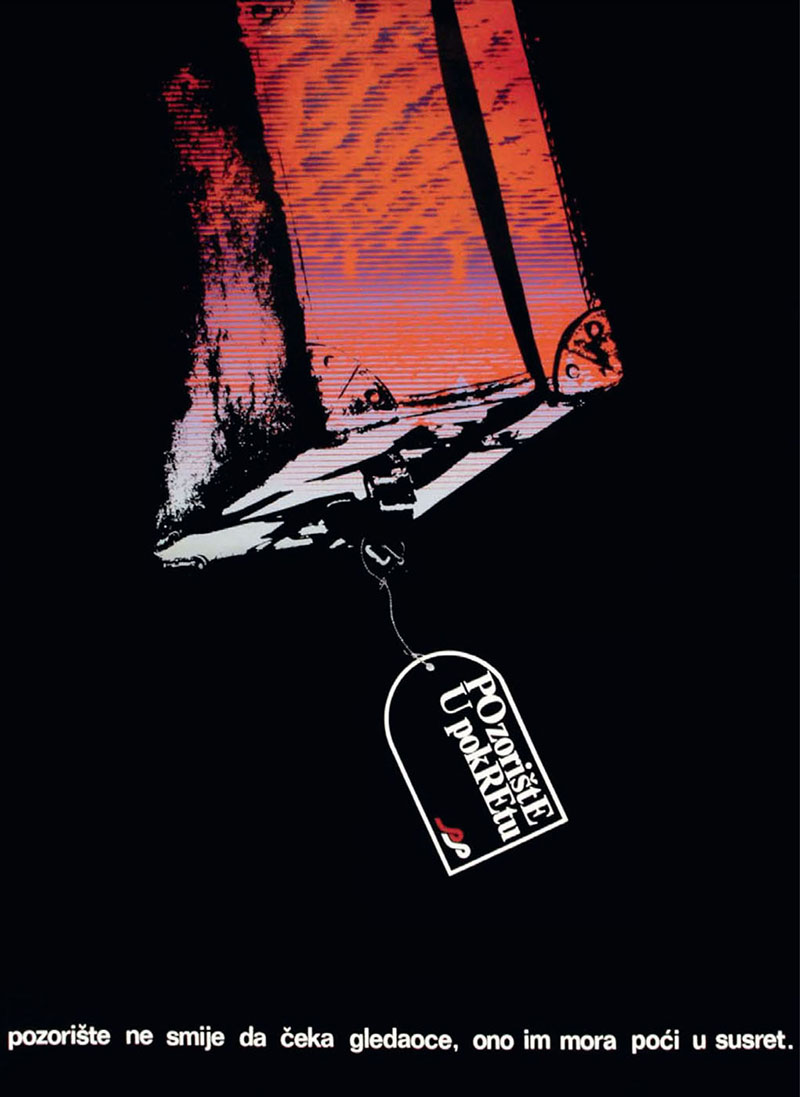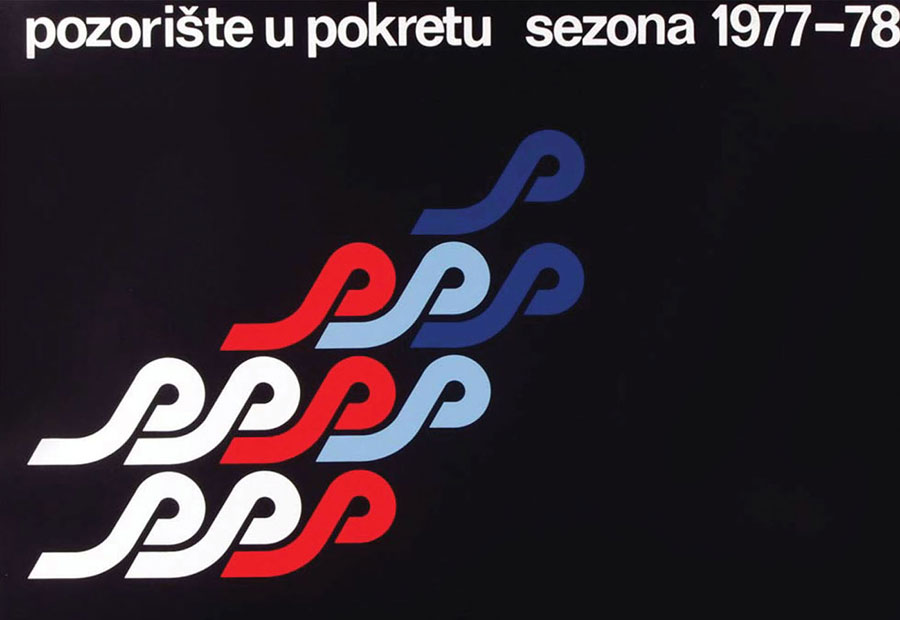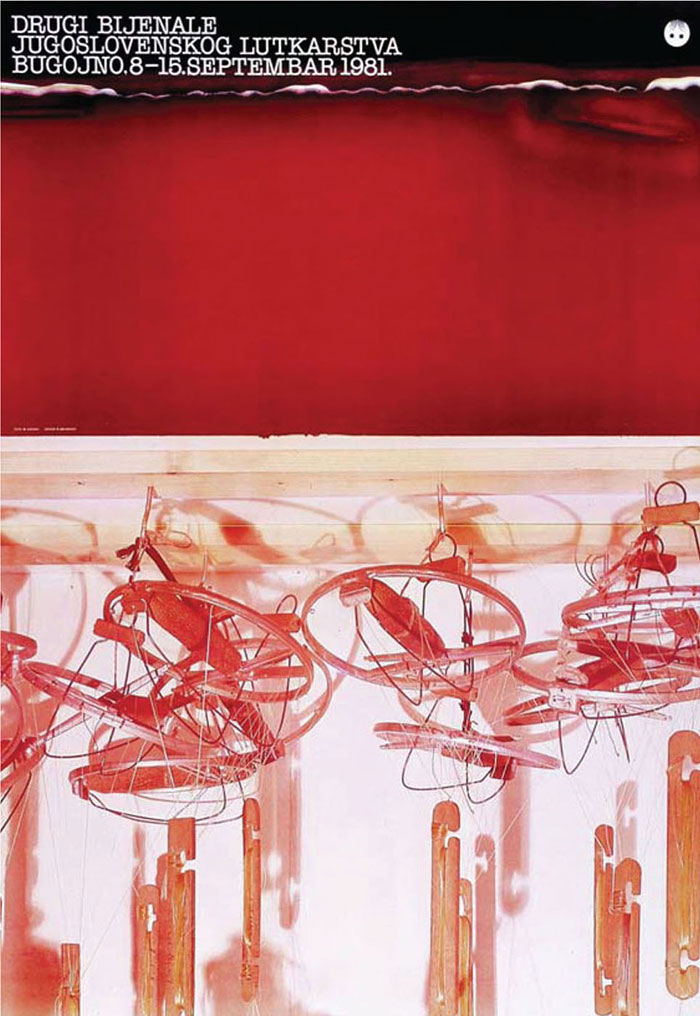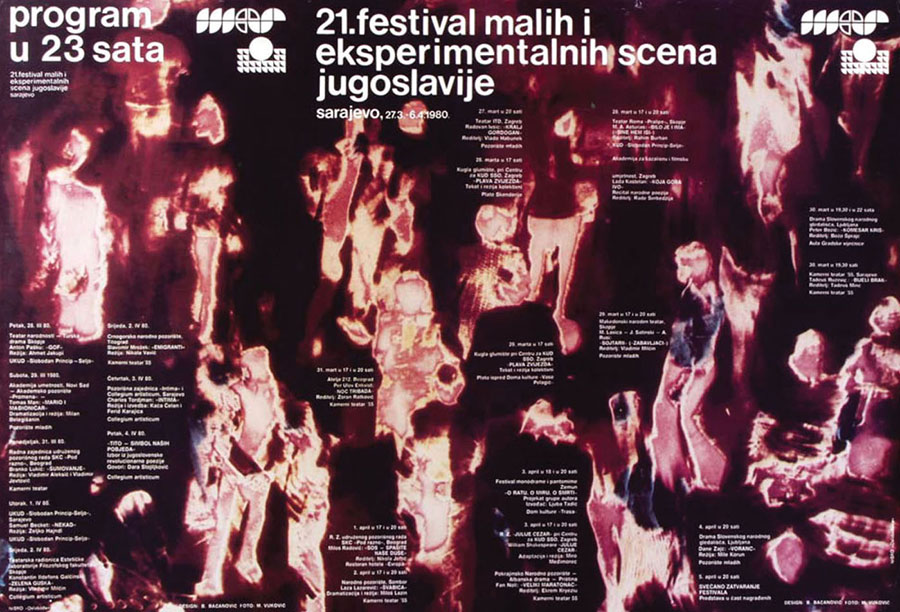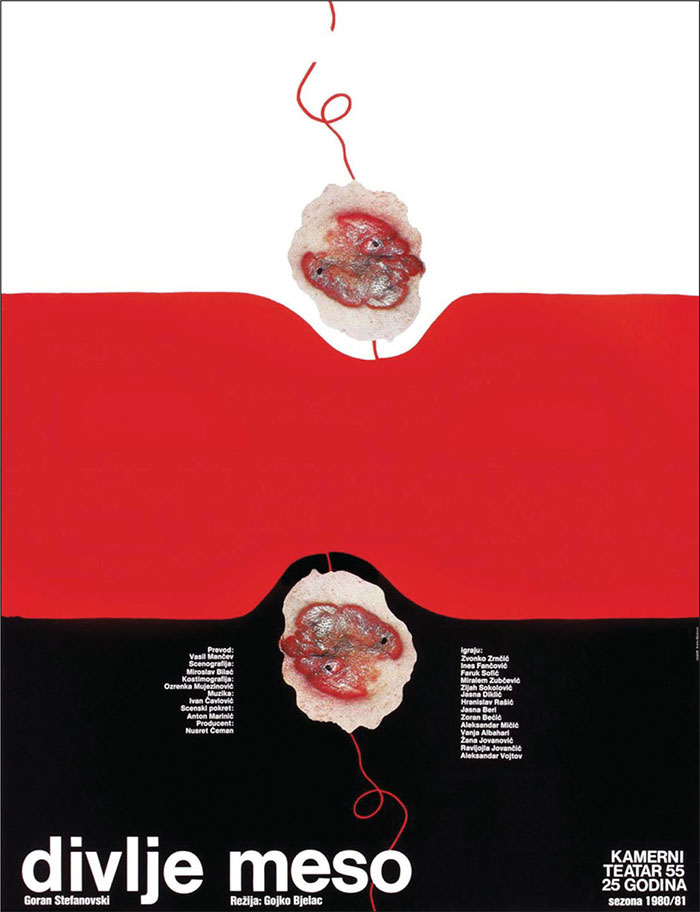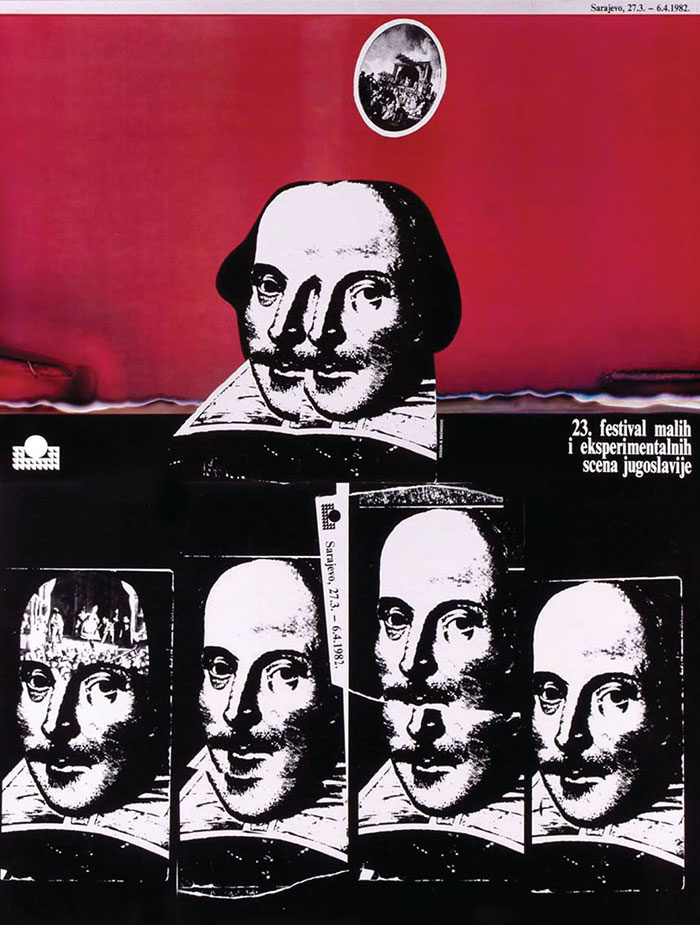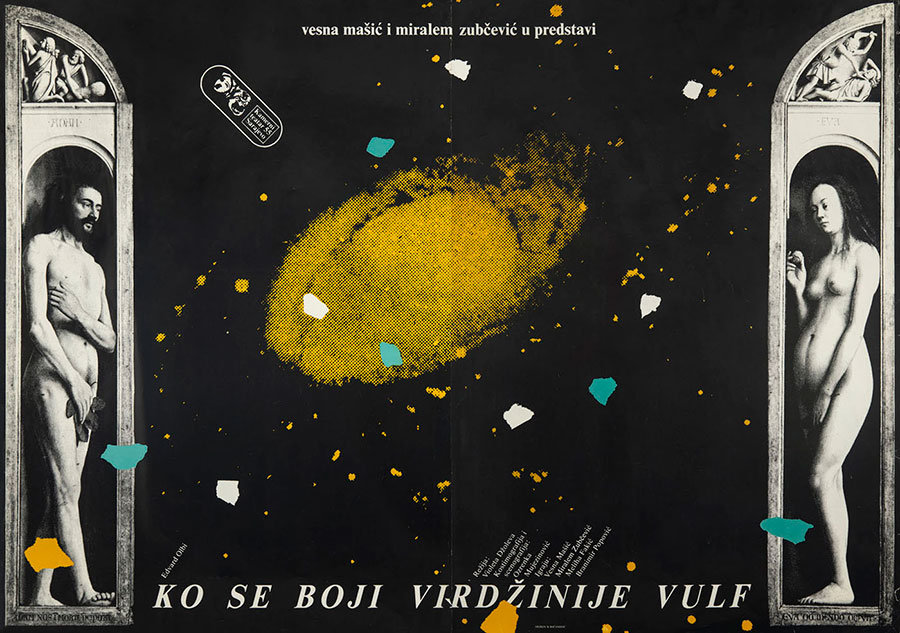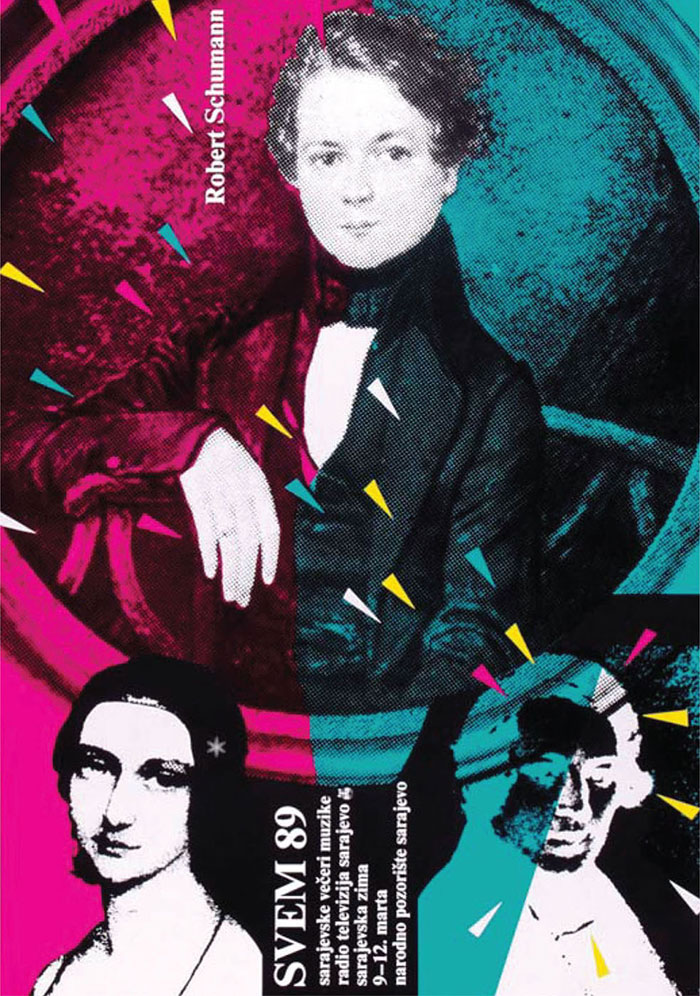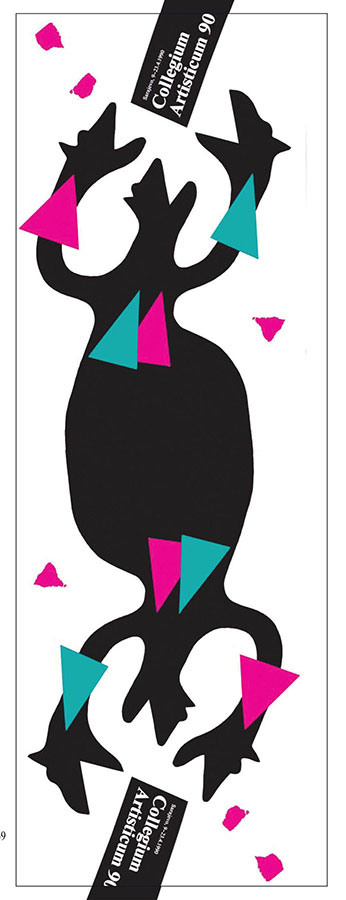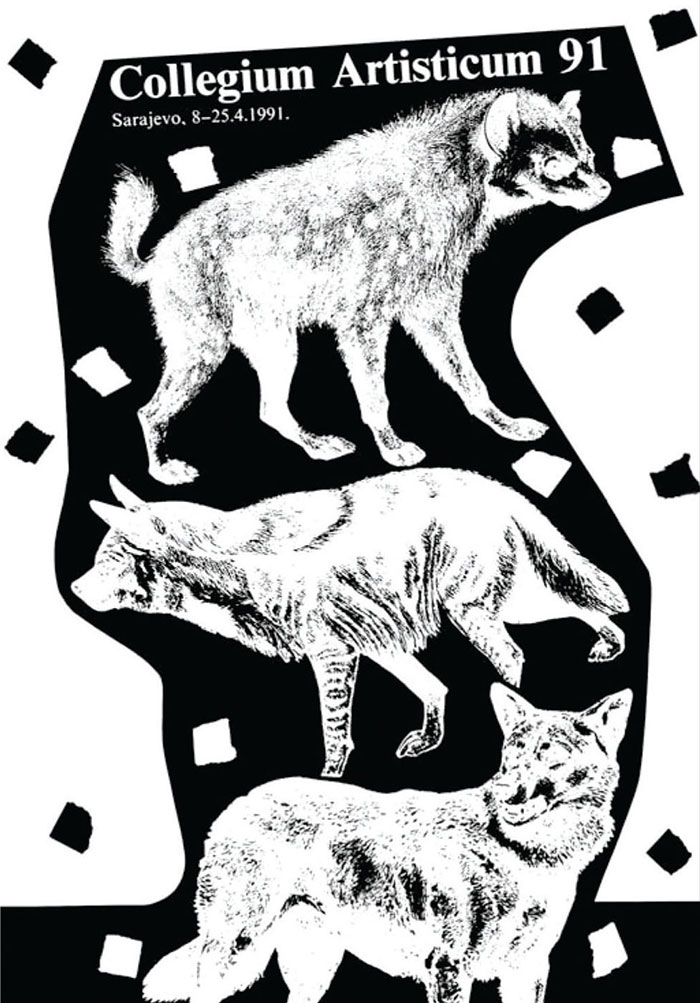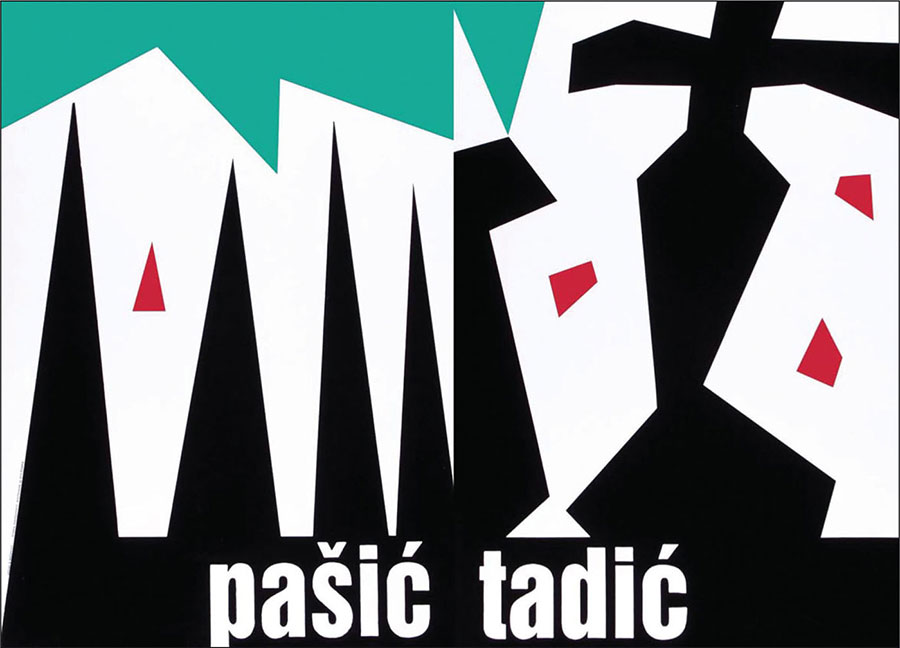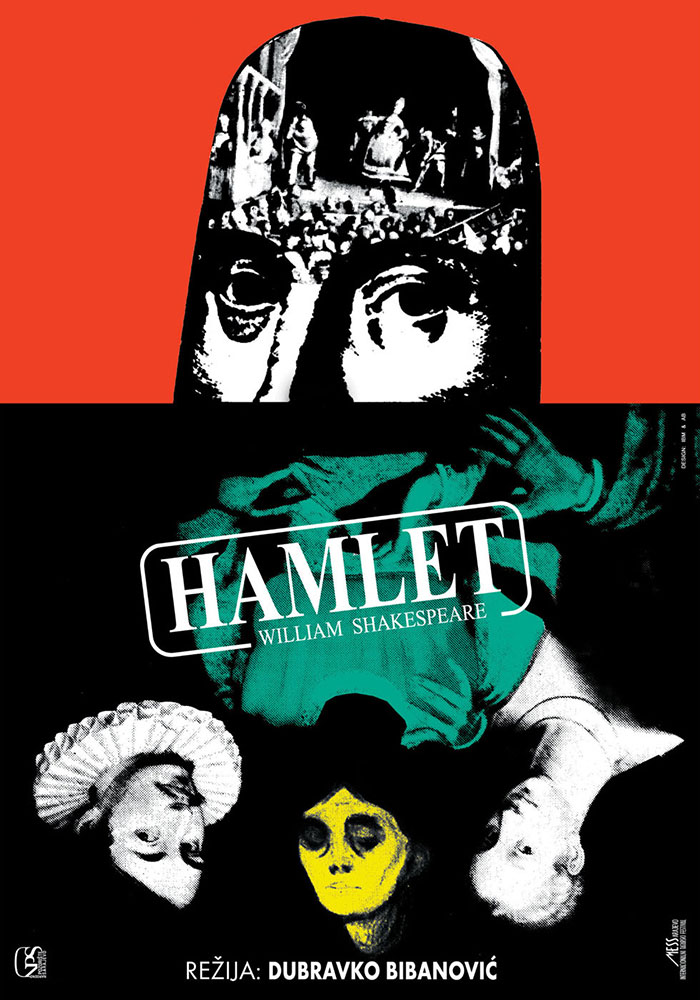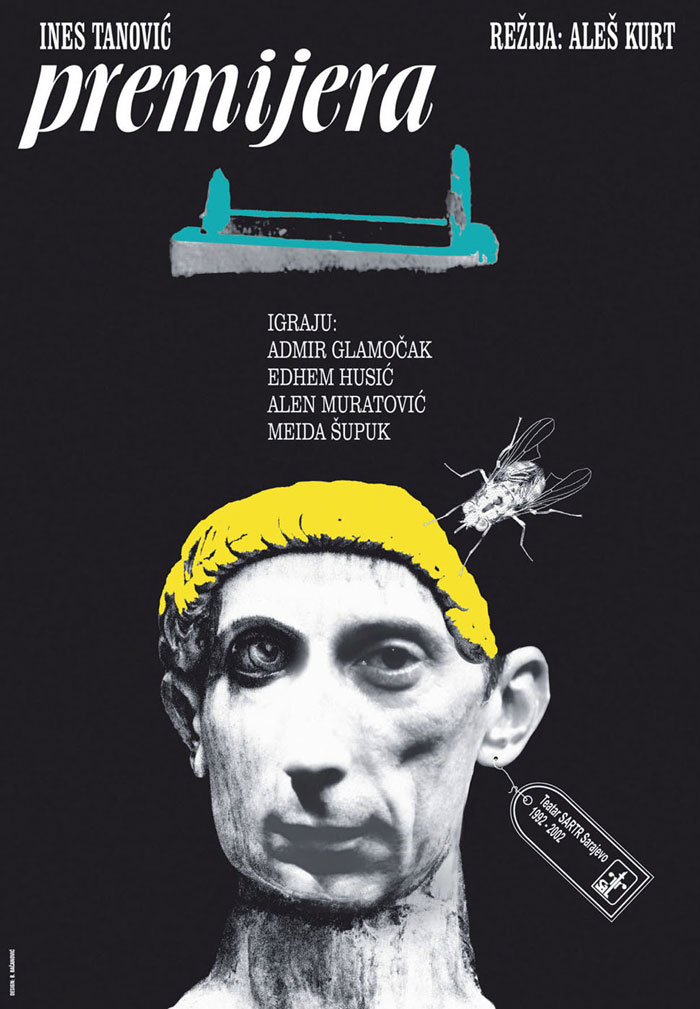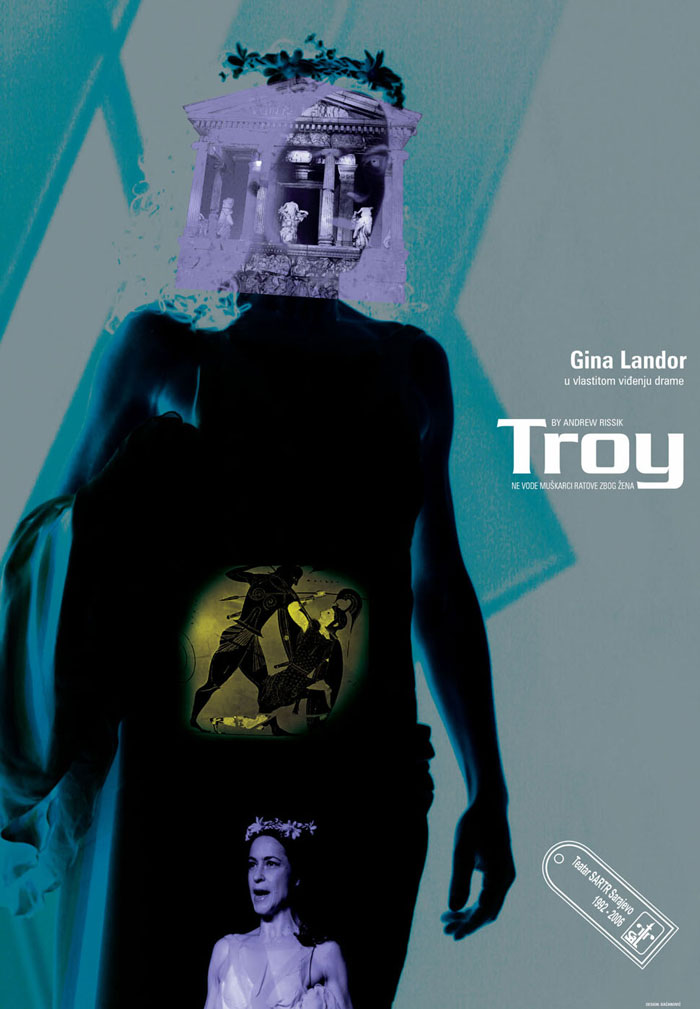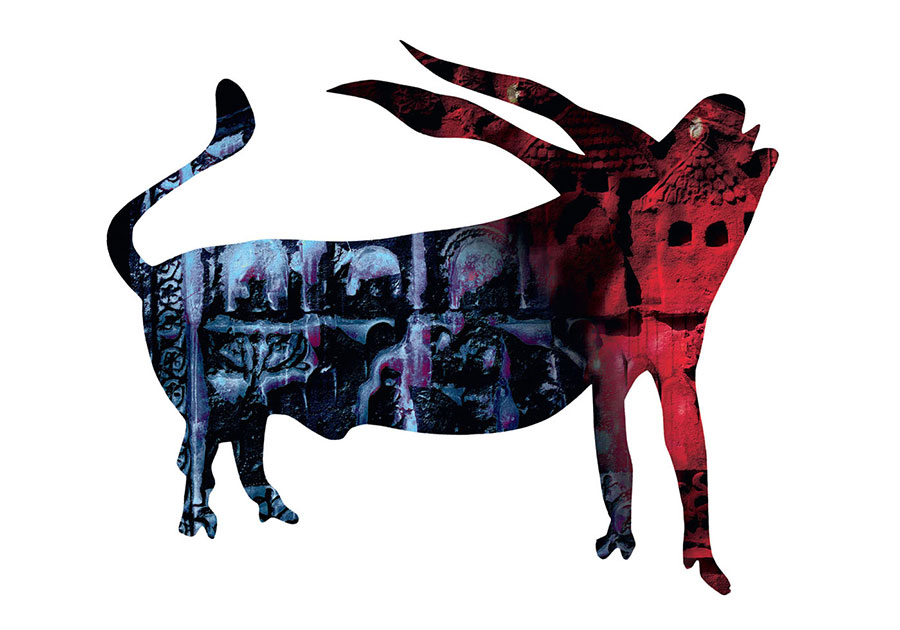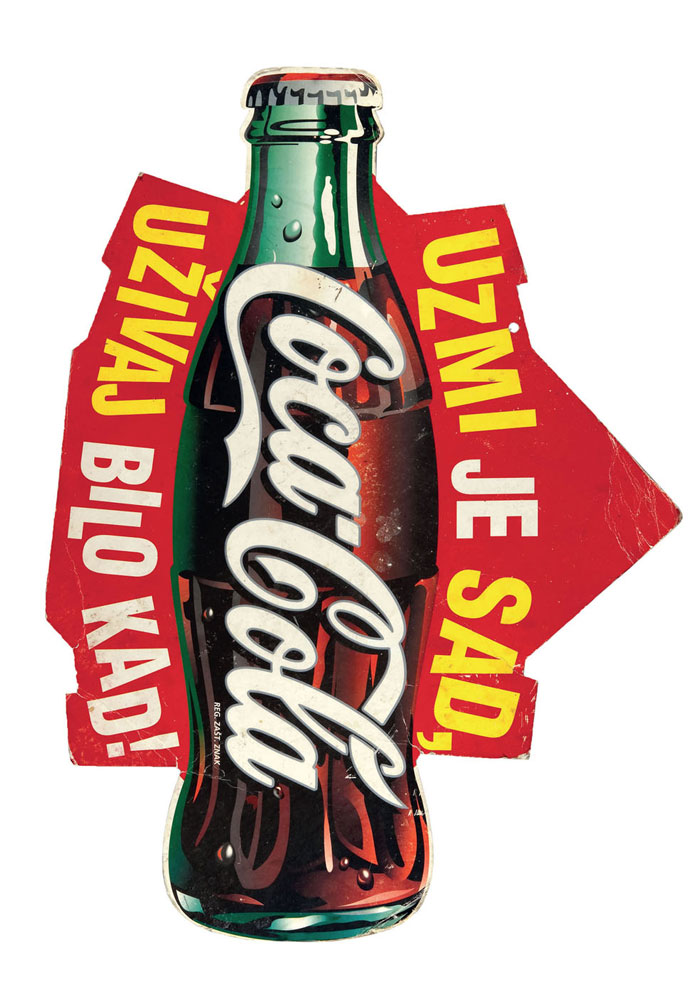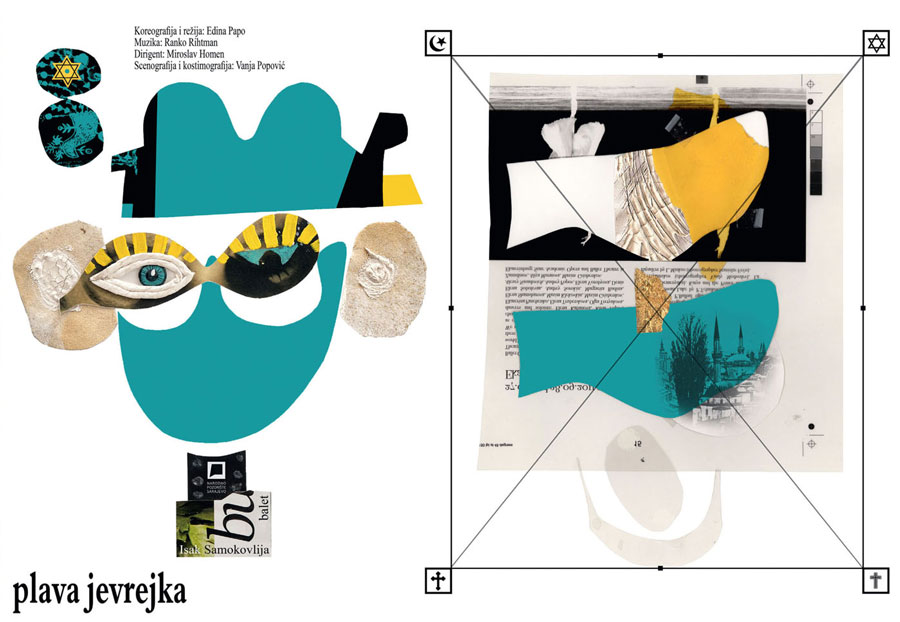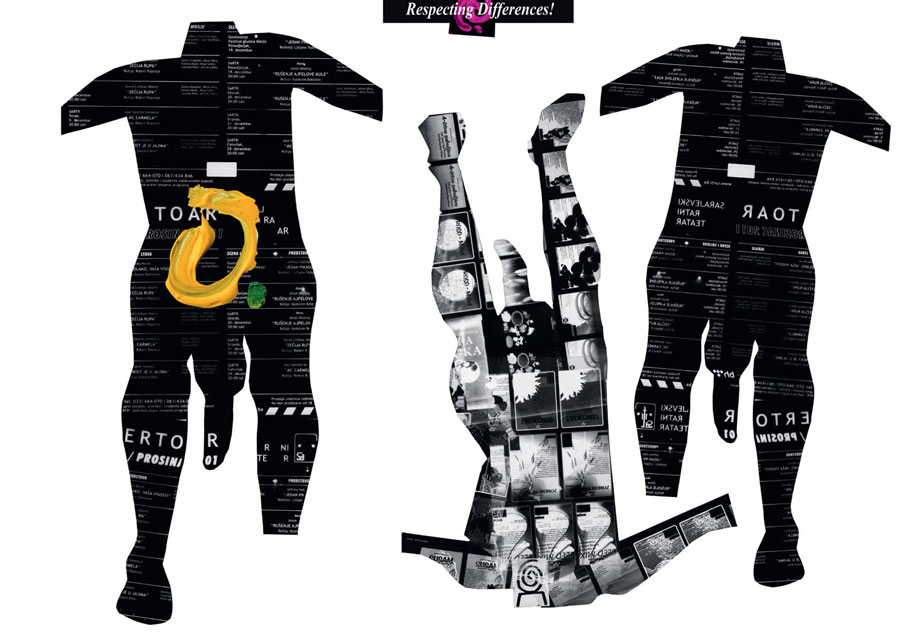GRAPHIC CONTINUITIES 1976 - 2023
Branko Bačanović was born in Sarajevo on June 14, 1952. He graduated from the Academy of Fine Arts of Bosnia and Herzegovina, majoring in graphic design, in 1977. He acted as the chairman of the Association of visual artists of applied arts of Bosnia and Herzegovina (ULUPUBiH) from 1988 to 1990. He exhibited at many solo and selective exhibitions in BiH and abroad (USA, Russia, Canada, Mexico, Poland, Finland, France, Belgium, Cuba, Bulgaria, Germany, Slovakia, Algeria, Japan, Croatia, Serbia, Montenegro, Slovenia …)
Since 1983, he has had the status of freelance artist, since 1992 the status of distinguished artist of the ULUPUBiH, since 2013 the status of meritorious artist of ULUPUBiH, as well as the status of distinguished freelance artist of Sarajevo Canton. From 2022 is memeber of Academy of Science and Arts of Bosnia and Herzegovina.
During the Winter Olympics in Sarajevo, ZOI ’84, he was in charge of designing visual identity of promotional materials (Manual of graphic standards).
Bačanović tried his hand at all forms of graphic design: full visual identity of events and companies, system of visualization in interior and exterior, design of books and monographs and various illustrations. His narrow specialization is the poster in culture, and he is also outstanding for introducing, in BiH theatres, the treatment of theatre poster as part of the play. Bačanović authored posters for cult movies of Bosnian and Herzegovinian and Yugoslav cinematography “Do You Remember Dolly Bell” and “When Father Was Away on Business”, and he also visually refned Dubravko Lovrenović’s cult monograph “Stećci” (Medieval Bosnian tombstones) which, as few other books, contributed to the proper scientifc understanding of our past. Branko Bačanović is certainly one of the most signifcant artists in the area of graphic design, both in Bosnia and Herzegovina and former Yugoslavia and across the world, due to the fact that his work has been recognized and appreciated at many international selective exhibitions, and that he was the only representative of BiH and ex-Yugoslav graphic design on a number of ccasions.
He is an artist whose work is not limited only to graphic design, an artist that imbues it with elements of other arts, and imbues other arts, from flm and theatre to valuable literary and scientifc pieces, with fruit of such work. His work has been discussed by well-known art critics, art historians, theatre artists … and numerous awards from the very beginning of his artistic career to this day illustrate the value of his work. Bačanović’s oeuvre is also a distinctive historical testimony of the time when theatre, book and flm were advertised; actually, it is the top quality of this area of advertising. In the same time, his oeuvre is a document of the milieu where artists, including Bačanović himself, worked.
Bačanović’s Magic Rites
Branko Bačanović is a graphic designer by education: however, the last decades of his work speak in favor of multi-positioning of this visual artist, which increasingly shifts from the stage of applied to the areas of artistically broadly positioned search, over truly endless vast of visuality, in the broadest sense conquering a dosage of creative freedom that he is objectively, as a rarely gifted creator, entitled to …
Over all the years of his artistic passion, Bačanović was mostly devoted to the poster art, and it has been almost half a century that he is present both on Sarajevo and BiH art scene and in the South European region, where he left a frm creative stamp, particularly in the art of graphic design of theatre posters.
His continuous engagement also brought him a number of recognitions of international character, and he is one of few BiH artists who won international competitions in the area of graphic design, particularly theatre poster and overall graphic setup of individual stage projects …
It is interesting to note that Bačanović’s way of giving meaning to theatre posters has been chosen by best directors of these times, for whose theatre creations Branko Bačanović repeatedly, for the needs of a few theatres’ productions, designed visual advertising material.
Committed to a silent, systematic, almost ritual way of preserving and nourishing a distinctive style, on the roads of his own research of graphic phenomena Bačanović acquired an aura of artistic authenticity, whereby the use of elements of the craft was combined with flames of creative invention, which would most often burst into true fre, which ultimately resulted in creations, of all but not off-the-shelf character, on trodden paths of graphic design and expression, which implied a duality of engagement – both the primarily advertising one and
one that emanated pure artistic energy and was the exponent of this author’s fundamental artistic aspirations.
Bačanović entered every adventure of creating a new visual value with an extreme risk, or perhaps better courage …
He gambles in the artistic sense, which then leads to outstanding elements of a completely new artistic value. This newly created artistic value is still, even after it has left its moorings, part of creative curiosity of permanent artistic and extremely productive skepticism as to whether some of the elements of graphic construction could be more functional and artistically more attractive?!
An overview of his works vividly reveals that Bačanović experienced some of his starry artistic moments between the 1970s and 1990s, as part of a momentum, the general momentum, of Sarajevo and BiH culture and arts …
He was part of artistic reality of virtually all Sarajevo theatres, and the initial success of newly established art educational institutions – Academy of Fine Arts, where he studied, and Academy of Performing Arts – was stamped with his, I am sure I can write down this term: visual art studies …
Film authors such as Emir Kusturica and Vefk Hadžismajlović also showed a need to conform their works to Bačanović’s creations in terms of fne arts and advertising.
Having stemmed from an artistic family, with his father being a famous baritone of Sarajevo opera Milivoj Bačanović, this designer embodied part of his artistic asceticism in various felds of music art.
He distinguished himself both in projects by Opera and Ballet of National Theatre Sarajevo and in the area of Sarajevo Philharmonic Orchestra activities
.....
An almost mythical dimension of visualization and metamorphosis of human figures is revealed on the compositions of tombstone marble the designer plays with, both within bulls’ bodies and in the verticals which occasionally gain a completely unexpected shape of a boot …
This exhibition presents a mature visual creator of different worlds, more imaginative, ludistically undisciplined. It also confrms that the artist who has something to say cannot be a slave to sacral actions leading to certain limits and bans …
Bačanović is different on this occasion as well, though of equal quality over time, above all for the comprehensive view of the content of the craft.
The shockingly hedonistic art!
mr. sci. Gradimir Gojer Gradimir Gojer (Theater director, actor and author)

